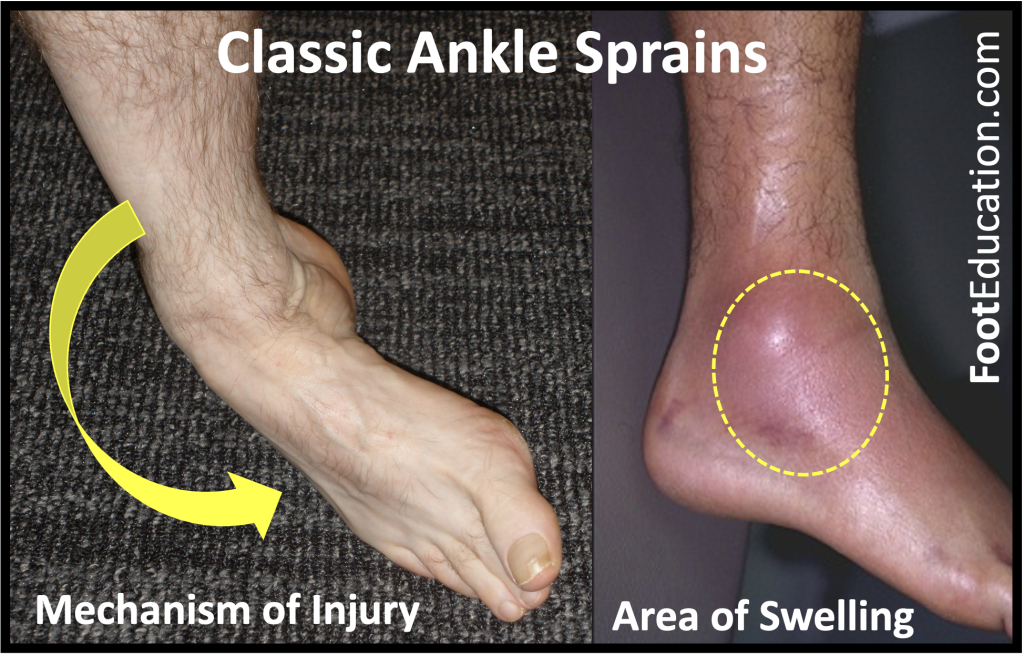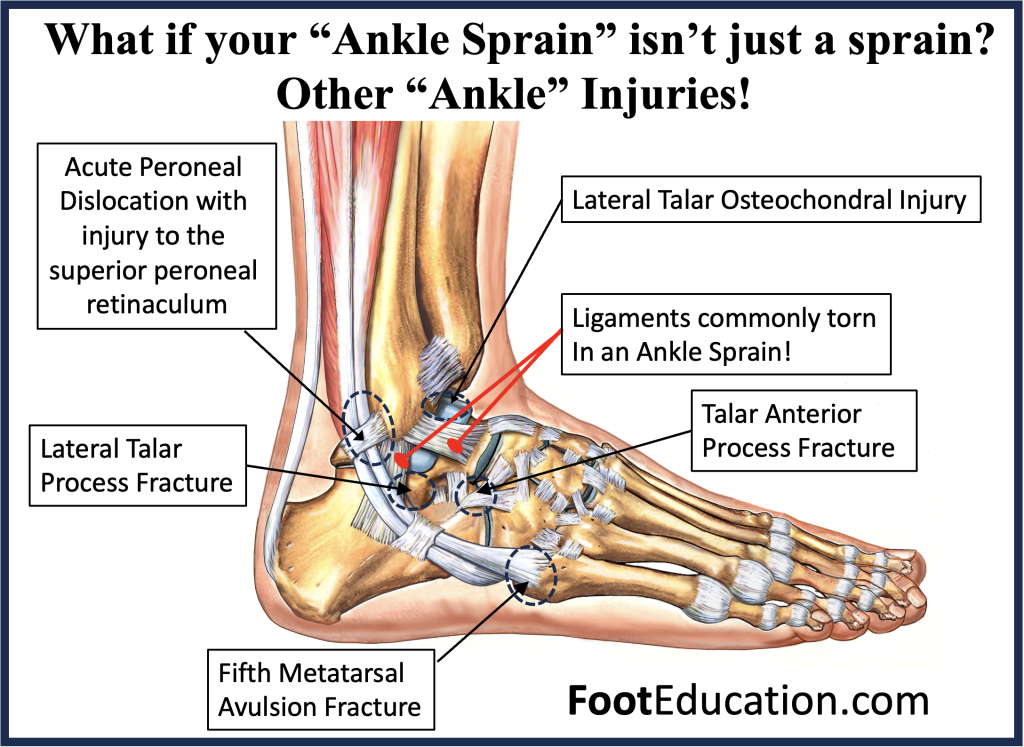If you’re like most people, you’ve probably twisted your ankle at some point (Figure 1). Maybe you were walking on uneven ground or playing a sport, and suddenly your ankle rolled inward. You felt a sharp pain on the outside of the ankle, and the area swelled up quickly. Walking might have been difficult or even impossible. That sharp pain often turns into a steady, throbbing ache—classic signs of an ankle sprain, where some of the ligaments that stabilize the outside of the ankle have torn.
But what if your “ankle sprain” isn’t just a sprain? What if it’s something more serious or even an additional injury on top of the sprain?

Most of the time, an ankle sprain really is just that—a sprained ankle. But in about 2-5% of cases, there can be other injuries that happen instead of or alongside the sprain. These less common but important injuries include fractures or tendon issues that require different treatments (Figure 2). Let’s break down some of these possible injuries and their treatments:

Fracture of the Anterior Process of the Calcaneus
A fracture of the anterior process of the calcaneus is a break in a small bony part at the front of the heel bone (calcaneus) near where it connects to other foot bones. This injury usually happens when the foot twists suddenly or during a hard landing after a jump. Sports involving quick direction changes or jumping, like basketball or gymnastics, are common culprits. Athletes and active people are more prone to this injury, but it can also occur from accidents like slipping and twisting the foot.
Treatment: Mild cases typically heal with rest, ice, wearing a protective boot, and avoiding putting weight on the foot. Severe fractures may require surgery to repair the bone.
Avulsion Fracture of the Fifth Metatarsal Base
An avulsion fracture of the fifth metatarsal base happens when a small piece of bone is pulled off the base of the fifth metatarsal, the long bone on the outer side of the foot that connects to the little toe. This injury usually occurs when the foot twists inward or during sudden, sharp movements, such as rolling an ankle. It often happens to athletes, but older people with weaker bones due to osteoporosis are also at risk.
Treatment: Rest, ice, and wearing a supportive boot or cast are common treatments. In rare cases, surgery may be needed if the bone doesn’t heal properly.
Acute Peroneal Tendon Subluxation with Disruption of the Superior Peroneal Retinaculum
An acute peroneal tendon subluxation injury occurs when the tendons on the outer side of the ankle (peroneal tendons) slip out of their normal position because a supportive tissue called the superior peroneal retinaculum is torn. It often happens during sudden twisting or rolling of the ankle, especially in sports like soccer, basketball, or skiing.
Treatment: Mild cases can heal with rest, ice, a supportive boot, and physical therapy. Severe cases often require surgery to repair the torn tissue and stabilize the tendons.
Fracture of the Lateral Process of the Talus (Snowboarder’s Fracture)
A fracture of the lateral process of the talus is a break in a small bony part on the outer side of the talus, a key bone in the ankle that helps connect the foot to the leg. This type of fracture often occurs during high-impact activities or accidents, such as snowboarding, where the ankle twists forcefully or lands awkwardly.
Treatment: Minor fractures can heal with rest, ice, wearing a protective boot, and avoiding weight on the foot. Severe fractures may require surgery to realign the bone and ensure proper healing.
Acute Osteochondral Injury to the Lateral Talar Dome
An acute osteochondral injury to the lateral talar dome involves damage to the smooth cartilage and the underlying bone on the outer part of the talus. This injury often happens during sudden twists, falls, or ankle sprains, which can cause the cartilage to crack or break. Athletes who play sports requiring sharp turns or jumping, like basketball or soccer, are at higher risk.
Treatment: Mild cases may heal with rest, ice, physical therapy, and wearing a brace or boot. More severe injuries, where the cartilage and bone are loose or damaged, may require surgery to repair or remove the damaged tissue.
In Conclusion:
If your “ankle sprain” seems unusually painful, swollen, or doesn’t improve with time, it’s important to get it checked by a healthcare professional. These less common injuries may only happen in a small number of cases, but catching them early can make a big difference in recovery time and long-term joint health. So next time you twist an ankle, remember—it might be more than just a sprain!
Edited by Stephen Pinney MD February 5th, 2025